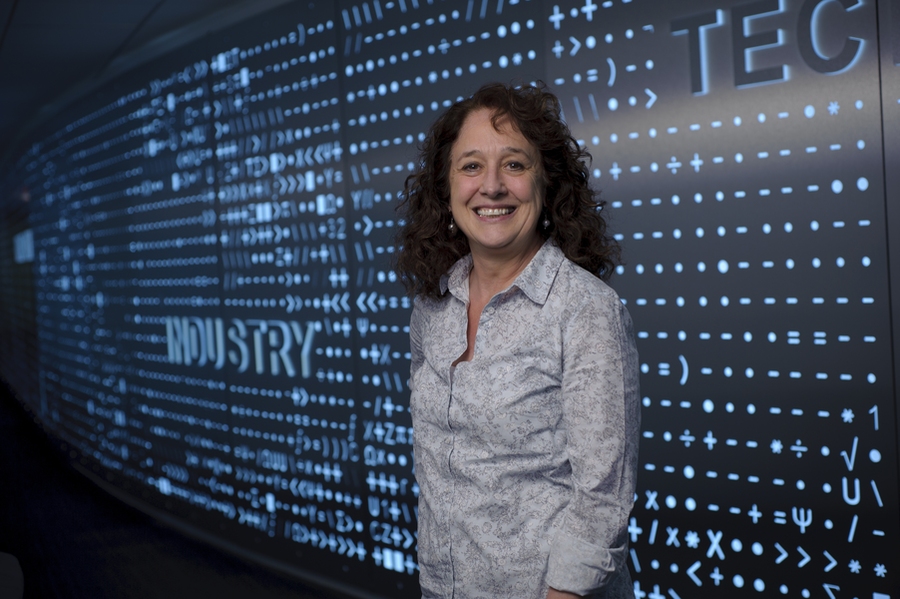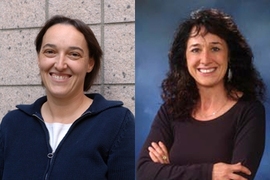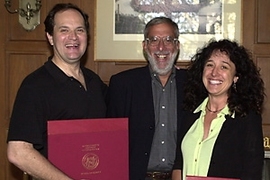“Kinase inhibitor” drugs, which target a class of enzymes that are crucial to keep cells running, make up one of the great success stories of modern medicine.
“When kinase proteins go wrong, cells go wrong,” says Barbara Imperiali, the Class of 1922 Professor of Biology and professor of chemistry at MIT. “So the aberrant behavior of kinases is often targeted as a therapeutic strategy.”
Although dozens of kinase inhibitors are now being investigated to treat cancers and other diseases, with associated development costs in the billions of dollars, the tools researchers employ to assess how well a drug compound actually engages a target kinase protein are far from ideal.
However, a powerful new approach for analyzing these interactions, developed in Imperiali’s lab, is now being commercialized in a startup firm. That’s just one spinoff from her research, which applies innovative chemical and physical methods to understand how proteins are modified in many cell activities.
Switching on or off cell activities
The job of kinases is to transfer a phosphate group to a protein, a process known as phosphorylation, and one main focus in Imperiali’s research.
“You can view phosphorylation as ‘light switches’ in a cell,” she says. “All the proteins within the cell may be in a steady state, but when you want to activate them, a kinase will phosphorylate its target substrate, which in many cases is itself or other kinases, thereby turning on or off enzyme activity. Many molecular pathways within cells are driven by these kinase activities, and misregulated kinases are common markers and sources of disease.”
Quite a few forms of cancer, for example, are driven by kinases that are displayed on the cell surface, and which pass on molecular signals from outside the cell and trigger aberrant actions inside the cell.
“Let’s imagine that a kinase is a traffic light in a pathway going to the nucleus,” Imperiali explains. “If the kinase is always on, the traffic light is permanently green, and the signal to the nucleus keeps going. The activity in the nucleus may cause the production of proteins that control cell growth, so cells with misbehaved kinases will just proliferate in an uncontrolled way, which may result in cancer. Inhibitors can dial down the activity of that kinase — basically turning the traffic light to red, or at least to yellow, to slow down the dangerous behavior.”
That’s one scenario among many where kinases cause cells to go bad. With more than 500 human kinases interacting with thousands of other cellular components, “there are countless opportunities for disruptions in the normal balance that result in disease — it’s mindboggling,” she says.
Adding to the difficulty of understanding how best to target kinases, many current biochemical tools don’t directly measure kinase interactions with drug candidates.
Imperiali’s group, however, creates sensors designed to make just such measurements, in a test tube or a cell. “The technologies we develop are based on fluorescence, which is a fantastic readout that can be used in high-throughput analyses with existing equipment,” she says. The approach is based on peptides (short pieces of proteins) that can be phosphorylated by kinases and include synthetic chemical components that light up fluorescently upon phosphorylation.
This analytic approach “doesn’t require complicated instrumentation or lots of hands-on manipulation that both put a burden on the lab; it just requires a simple fluorescent plate reader that’s in almost every lab in the country,” Imperiali says. “And because fluorescent tools can report activity in real time, they give you a much better grasp on how well kinase inhibitor drugs are doing the job that they need to do.”
Completing kinase research kits
Once her lab had advanced the technology far enough for commercialization, Imperiali knew that simply licensing the related intellectual property might not be sufficient. “When you make research tools, you may think that, if you build it they will come, but you have to go a lot further,” she says. “The average biology or biochemistry group wants to buy a kit that includes everything they need to use the new tools.”
That was the realization behind her co-founding AssayQuant Technologies with Erik Schaefer, an expert in tool development for life sciences. AssayQuant was started in July 2015 and is located in Marlboro, Massachusetts. Opening for business in February 2016, the company now offers more than 120 assays for high-value kinase targets. In addition, the company works with individual companies to form partnerships to provide custom assay development for specific kinases.
Down the road, Imperiali hopes that AssayQuant can collaborate with bioengineering firms to create multi-kinase diagnostic kits that enable a technician to analyze a sample by simply plugging a chip into an instrument. Eventually, she suggests, these technologies might be extended to monitor how cancer patients are responding to treatment by profiling kinase activities in their tumors.
In the meantime, launching a company “is a rollercoaster ride,” she says. “You don’t realize at the beginning how much you’ve bitten off. But it’s fun, and I’m really proud that something we developed in a lab has this type of practical utility and reach.”
Sugar-coated infections
In another main research effort, Imperiali’s lab investigates a process known as glycosylation, in which sugars attach to proteins.
“Proteins are decorated with sugars to help them fold, or reach their proper destination on the surface of cells, or be secreted from cells, or stay stable outside the cell or do other very fundamental processes,” she says. “We hope to understand the various roles sugars play in human health, physiology, infection, and the microbiome.”
Her group primarily looks at glycosylation in bacteria — both the bacteria that make up the human microbiome and the infectious bacteria that may threaten us — and how these microbes interact with human cells.
Notably, infectious bacteria use glycoproteins (proteins with sugars attached) on their cell surface to invade human host cells. That raises a key question, Imperiali says: “Can we knock down a bacteria’s virulence by stopping the pathways they use to make their own glycoproteins?” Traditional drugs aim to simply kill off dangerous bacteria, so there’s skepticism among drug firms about potential treatments that only impair bacterial ability to spread. However, she says that this work is approaching commercial potential.
A separate, earlier-stage research project in her lab aims to develop ways to diagnose bacteria with small sensing molecules that detect specific sugars on the bacterial cell surface. “Recognizing the sugars a bacterium is exhibiting might give you a clue quicker than other diagnostic approaches,” she says, “which may represent a whole new opportunity!”








